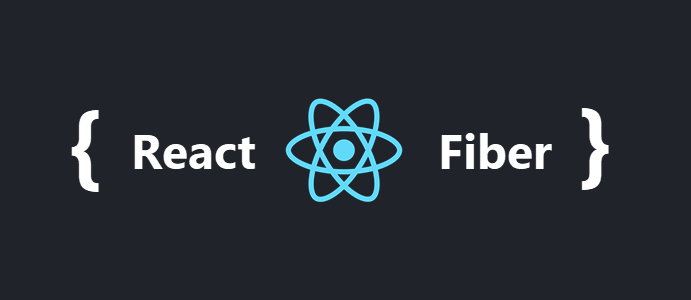ReactDOM.render
- 判断container容器是否合法
- 容器是否标记为root
legacyRenderSubtreeIntoContainer
- topLevelUpdateWarnings: 判断是否是合法的container,否则会抛出warning
- warnOnInvalidCallback$1: 判断render的回调函数是否合法
- 检查有没有root,首次渲染是undefined,需要通过legacyCreateRootFromDOMContainer创建
- new ReactDOMBlockingRoot对象,内部的_internalRoot是createRootImpl的返回值,该函数内部调用createFiberRoot,创建new FiberRootNode作为返回值,并且把首次的current指向uninitializedFiber,相同的,把uninitializedFiber的stateNode设为新建的FiberRootNode。再初始化update队列。
1
2
3
4
5
6
7
8function createFiberRoot(containerInfo, tag, hydrate, hydrationCallbacks) {
var root = new FiberRootNode(containerInfo, tag, hydrate);
var uninitializedFiber = createHostRootFiber(tag);
root.current = uninitializedFiber;
uninitializedFiber.stateNode = root;
initializeUpdateQueue(uninitializedFiber);
return root;
} - root创建完后,用markContainerAsRoot把container标记为root,对应上面的ReactDOM.render中的判断。
- 继续调用listenToAllSupportedEvents方法在container监听所有的方法。
- 最终返回的结果会挂在container._reactRootContainer上。(container._reactRootContainer应该就是RootFiber,其属性_internalRoot则就是FiberRoot)
1
2
3// Initial mount
root = container._reactRootContainer = legacyCreateRootFromDOMContainer(container, forceHydrate);
fiberRoot = root._internalRoot; - 然后包装下传入的callback,今后处理。
- 再用unbatchedUpdates来调用updateContainer。这里面处理update,用createUpdate配合优先级创建,并把callback等参数塞入创建的update,然后scheduleUpdateOnFiber开启调度。
- 在scheduleUpdateOnFiber中开启performSyncWorkOnRoot,传入FiberRootNode,开始重要的reconcile。
performSyncWorkOnRoot
- 先用flushPassiveEffects函数来把之前的effects给一次性调用了。
- 调用renderRootSync,感觉是从入口进入了。开头判断了workInProgressRoot是否一致,这里有点不清楚原因。
1
2
3
4
5
6
7
8var prevDispatcher = pushDispatcher();
// If the root or lanes have changed, throw out the existing stack
// and prepare a fresh one. Otherwise we'll continue where we left off.
if (workInProgressRoot !== root || workInProgressRootRenderLanes !== lanes) {
prepareFreshStack(root, lanes);
startWorkOnPendingInteractions(root, lanes);
} - 进入workLoopSync,好戏开场。
1
2
3
4
5
6
7
8do {
try {
workLoopSync();
break;
} catch (thrownValue) {
handleError(root, thrownValue);
}
} while (true); - 用workInProgress来循环调用performUnitOfWork,直到构造完所有节点。
1
2
3
4
5
6function workLoopSync() {
// Already timed out, so perform work without checking if we need to yield.
while (workInProgress !== null) {
performUnitOfWork(workInProgress);
}
} - performUnitOfWork中开始fiber的『递』操作:beginWork(深度优先遍历,会为遍历到的每个Fiber节点生成他的所有子Fiber并返回第一个子Fiber,这个子Fiber将赋值给workInProgress)。在其中会根据fiber的tag来做不同的处理。随后会调用reconcileChildren来继续深入子节点。
- reconcileChildren中继续调用reconcileChildFibers。
- 调用createFiberFromElement,当中的createFiberFromTypeAndProps会调用createFiber
1
2
3
4
5
6
7
8
9
10
11
12
13
14
15function createFiberFromElement(element, mode, lanes) {
var owner = null;
{
owner = element._owner;
}
var type = element.type;
var key = element.key;
var pendingProps = element.props;
var fiber = createFiberFromTypeAndProps(type, key, pendingProps, owner, mode, lanes);
{
fiber._debugSource = element._source;
fiber._debugOwner = element._owner;
}
return fiber;
}1
2
3
4
5
6
7
8
9
10
11function createFiberFromTypeAndProps(type/*React$ElementType*/, key, pendingProps, owner, mode, lanes) {
// ...
var fiber = createFiber(fiberTag, pendingProps, key, mode);
fiber.elementType = type;
fiber.type = resolvedType;
fiber.lanes = lanes;
{
fiber._debugOwner = owner;
}
return fiber;
} - 当遇到叶子结点,也就是没有child的fiber时,就会进入『归』操作:completeUnitOfWork。处理完会接着处理该叶子节点的sibling fiber。如果没有sibing fiber,那么就会处理return fiber。
- 循环往复上面的『递』和『归』逻辑。
本博客所有文章除特别声明外,均采用 CC BY-NC-SA 4.0 许可协议。转载请注明来自 漫漫前端路!
评论







